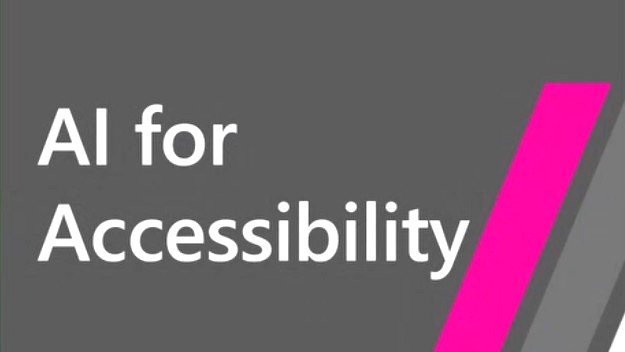AI and Accessibility: In today’s rapidly evolving technological landscape, artificial intelligence (AI) has emerged as a powerful tool with the potential to transform the lives of individuals with disabilities. Accessibility, often seen as a challenge in the digital world, is now being addressed through innovative AI solutions. This article explores the intersection of AI and accessibility, highlighting the remarkable strides made in improving the quality of life for people with disabilities.
AI-Powered Assistive Technologies
One of the most significant ways AI is enhancing accessibility is through assistive technologies. These technologies leverage AI algorithms to provide support and assistance to individuals with disabilities. For example, speech recognition systems, powered by AI, enable people with mobility impairments to control computers and smartphones using voice commands, thus enhancing their digital independence.
Improving Visual Accessibility
AI-driven computer vision technology has brought about remarkable improvements in visual accessibility. Text-to-speech applications, such as screen readers, use AI algorithms to convert text into audio, making digital content accessible to individuals with visual impairments. Furthermore, AI can describe images and videos, providing context and descriptions to those who are blind or visually impaired.
Enhancing Communication
AI has also revolutionized communication for individuals with speech and hearing impairments. Speech synthesis and recognition technologies enable people with speech disabilities to communicate more effectively. Additionally, AI-powered sign language recognition tools can translate sign language into text or speech, facilitating communication between individuals with different communication needs.
Navigational Assistance
Navigation can be challenging for people with mobility impairments. AI-powered navigation apps and devices use real-time data and machine learning to provide accessible routes and transportation options for individuals with disabilities. These applications help people plan their journeys, locate accessible facilities, and ensure a smoother and more inclusive travel experience.
Inclusive Education
AI has the potential to revolutionize inclusive education by personalizing learning experiences. AI-driven educational tools can adapt content to cater to the individual learning needs of students with disabilities. For instance, speech recognition can provide real-time feedback to students with dyslexia, helping them improve their reading skills. Moreover, AI can transcribe lectures for deaf or hard-of-hearing students and provide subtitles for videos.
Employment Opportunities
AI also plays a significant role in expanding employment opportunities for individuals with disabilities. By automating routine tasks and providing accessible work environments, AI technologies enable people with disabilities to contribute to the workforce more effectively. This inclusion not only benefits individuals but also enriches the diversity and creativity within organizations.
Future Challenges and Considerations
While AI has made remarkable strides in enhancing accessibility, there are still challenges to overcome. Ensuring the ethical and responsible use of AI in accessibility is critical. Striking a balance between innovation and privacy concerns, as well as addressing bias in AI algorithms, remains a continuous challenge.
Conclusion
Artificial intelligence is a powerful force in breaking down barriers and improving accessibility for individuals with disabilities. From assistive technologies to educational enhancements and employment opportunities, AI is transforming lives. However, it is essential to continue developing AI solutions with a focus on inclusivity, ethics, and fairness. As we move forward, we have the opportunity to make technology more accessible and empower individuals with disabilities to lead more fulfilling lives.
FAQs:
What is the connection between AI and accessibility?
AI and accessibility are interconnected as AI technologies are being used to develop innovative solutions that enhance accessibility for individuals with disabilities.
How does AI assist individuals with disabilities?
AI assists individuals with disabilities by providing them with tools and applications that cater to their unique needs, such as speech recognition, screen readers, and sign language recognition.
What are some AI-powered assistive technologies?
AI-powered assistive technologies include speech recognition systems, text-to-speech applications, navigation aids, and communication tools for individuals with disabilities.
Can AI improve visual accessibility for people with visual impairments?
Yes, AI can significantly improve visual accessibility by converting text to speech, describing images and videos, and making digital content more accessible for individuals with visual impairments.
How does AI enhance communication for those with speech and hearing impairments?
AI enhances communication for individuals with speech and hearing impairments through speech synthesis, speech recognition, and sign language recognition technologies that facilitate effective communication.
What role does AI play in inclusive education?
AI plays a vital role in inclusive education by personalizing learning experiences, providing real-time feedback, and making educational content more accessible to students with disabilities.
How does AI contribute to employment opportunities for individuals with disabilities?
AI contributes to employment opportunities for individuals with disabilities by automating tasks, creating accessible work environments, and enabling greater participation in the workforce.
What challenges are associated with the use of AI in accessibility?
Challenges include ethical considerations, privacy concerns, and addressing biases in AI algorithms. Ensuring responsible AI use is crucial in the field of accessibility.
How can organizations promote AI-driven accessibility initiatives?
Organizations can promote AI-driven accessibility initiatives by investing in research and development, collaborating with accessibility experts, and prioritizing the inclusion of individuals with disabilities in the design process.
What is the future outlook for AI and accessibility?
The future outlook for AI and accessibility is promising, with continued advancements in AI technology expected to lead to even greater accessibility improvements, provided ethical and inclusive practices are maintained.
